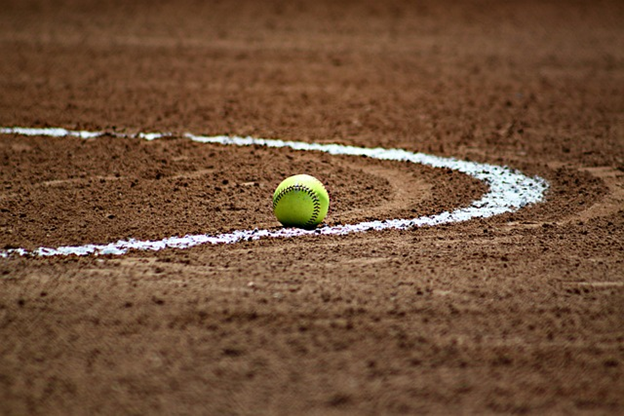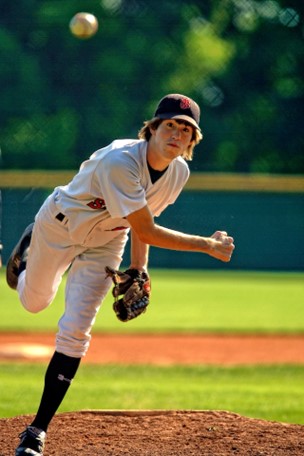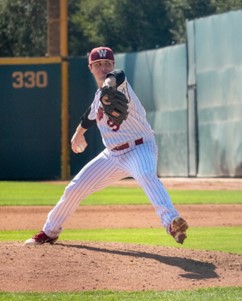Edward Andrew Karpus is an avid baseball fan who enjoys understanding the mechanics of the baseball pitch, including the strategy, precision and athleticism needed. In the following article, Edward Karpus discusses the mechanics of fastballs and curveballs, providing techniques for aspiring pitchers and enthusiasts alike.
Pitching is often considered the heart and soul of baseball. A masterful pitcher can be the difference between victory and defeat, making it essential for aspiring hurlers to hone their skills in the art of pitching.
Below, Edward Karpus delves into the fundamentals of pitching, dissecting the mechanics of fastballs and curveballs, and providing valuable insights to help you perfect your technique.
Edward Karpus Explains the Fundamentals of Pitching: Fastballs and Curveballs

Fastballs and Curveballs form the foundation of the art of pitching, providing a one-two punch that can deceive batters and keep them guessing. A pitcher’s ability to master these two techniques can make a significant impact on their success on the mound, as they rely on the unique grip, speed, and movement of each pitch to dominate the game when the pitcher throws. These pitches are essential for different situations and are often used strategically to keep batters guessing and off balance.
Fastballs: Edward Karpus says that fastballs are known for their speed and are considered the power pitches of baseball. They are designed to be thrown with velocity and minimal movement. Fastballs can be delivered with high precision and are typically used to challenge hitters with sheer speed. A well-executed fastball can be a dominant weapon, allowing pitchers to blow the ball past the batter.
Curveballs: Curveballs, on the other hand, are characterized by their spin and movement. These pitches are designed to break away from the batter’s trajectory, creating an illusion of unpredictability. Curveballs are slower than fastballs but have a wicked spin that can make them difficult to hit. They are often used to keep batters off balance and to induce swings and misses.
Key Differences Between Fastballs and Curveballs
Understanding the key distinctions between fastballs and curveballs is crucial for any pitcher:
Speed vs. Movement: The primary difference is the speed of these pitches. Fastballs are thrown with maximum velocity and minimal movement, while curveballs are slower and have a pronounced break due to their spin.
Purpose: Edward Karpus notes that fastballs are used to challenge hitters and overpower them with speed, making them a valuable weapon for strikeouts. Curveballs aim to deceive and disrupt the batter’s timing, inducing ground balls, pop-ups, or swinging strikes.
Grip and Release: The grip and release for these pitches differ significantly. Fastballs are typically thrown with a straight-overhand delivery, while curveballs require a unique grip and a downward snap of the wrist to generate spin.
Count and Situation: Pitch selection depends on the count and situation in the game. Fastballs are often used in favorable counts for the pitcher (e.g., 0-2) to get strikeouts, while curveballs can be employed in less predictable counts to keep batters off balance.
Hitting Difficulty: Hitting a well-executed fastball is challenging due to its speed, while a well-located curveball can be equally difficult to handle due to its movement.
Perfecting Fastball Technique
Edward Karpus says to perfect your fastball technique, it’s essential to delve into the mechanics, grips, and strategies that will help you consistently deliver a blazing fastball that leaves batters in awe.
Understanding the Fastball: Their Types
Fastballs come in various types, each offering unique characteristics and advantages. Let’s take a closer look at some common fastball types:
Two-seam Fastball: The two-seam fastball is known for its sinking action. It is delivered with a two-finger grip along the seams, which creates lateral movement and sinks as it approaches the plate.
Four-seam Fastball: Edward Karpus says that the four-seam fastball is prized for its speed and backspin. It is gripped with the fingertips along the four seams of the ball, minimizing movement and maximizing velocity.
Mechanics of a Fastball
To become a master of the fastball, you must pay close attention to the following mechanics:
Proper Grip and Hand Placement: The grip is the starting point for a great fastball. Experiment with different grips to find the one that suits your hand size and style. Ensure that your fingers are aligned correctly along the seams to promote control and movement.
Body Position and Balance: A strong, balanced stance on the mound is vital. Your stride, stride length, and balance are essential components that contribute to the consistency and accuracy of your fastball.
Arm Action and Release Point: The way you release the ball directly influences its trajectory. The optimal release point is usually a high three-quarter or overhand position. Work on achieving a consistent release point to maintain accuracy.
Developing Velocity and Accuracy: Increasing your fastball’s speed while maintaining accuracy is a challenging but necessary pursuit. This often involves a combination of improved mechanics, strength, and conditioning.
Strengthening Exercises for Fastball Speed: Building arm strength is essential for a powerful fastball. Edward Karpus remarks that exercises that target your upper body and core, such as weighted ball throws and resistance band workouts, can significantly contribute to velocity.
Drills for Enhancing Pitching Accuracy: Consistent accuracy is the hallmark of a great fastball. Drill sessions focused on honing your control are essential to your development as a pitcher.
Mental Focus and Visualization: Edward Andrew Karpus says, beyond physical mechanics, mental focus plays a pivotal role in delivering a successful fastball. Visualization techniques can help you maintain composure and pinpoint your target, even in high-pressure situations.
 Mastering the Curveball
Mastering the Curveball
While fastballs are the foundation of any pitcher’s arsenal, mastering the art of the curveball can add another layer of deception and complexity to your game. Understanding the different curveball grips and perfecting your throwing motion can make your curveball a lethal weapon on the mound.
Understanding the Curveball Grip: Their Types
Edward Karpus notes that there are several different curveball grips, each with its own unique spin and movement characteristics. By understanding the different grips and how they affect the ball’s trajectory, you can choose the grip that best suits your pitching style and maximizes your curveball’s effectiveness. Here are some common curveball grips:
112-6 Curveball Grip: The 12-6 curveball is named after the numbers on a clock, indicating the vertical drop it exhibits as it approaches the plate. To throw this curveball, use a grip that emphasizes a vertical break.
Crossover Grip: The crossover grip is another way to impart a sharp break on your curveball. It involves holding the ball across the seams to create lateral movement.
Pointer Grip: The pointer grip focuses on using your index finger as a guide to create spin. This grip allows you to control the movement of the ball.
Fingernail Grip: The fingernail grip involves positioning your fingers closer to the ball’s seams, generating a tight spin for enhanced movement.
Knuckle Curve Grip: The knuckle curve is thrown with a grip that emphasizes the knuckles making contact with the ball. It’s known for its late-breaking, sharp movement.
Advanced Curveball Techniques
Perfecting this technique involves more than just grip; it’s about mastering the entire delivery. Here are some advanced techniques to consider:
Windup and Pitching Stance: A consistent windup and stance are crucial for throwing a reliable curveball. Your posture and leg position should be in harmony with your curveball grip.
Arm Slot and Release Point: The angle at which you release the ball directly influences the direction of your curveball’s break. A consistent arm slot is essential for a repeatable delivery.
Follow-Through and Finishing the Pitch: A smooth and controlled follow-through helps maintain control and accuracy. Your finish should be balanced and in line with your target.
Developing Spin and Break: The key to an effective curveball is a tight spin and a sharp, unpredictable break. Practicing this spin is essential for consistency.
Drills and Exercises to Enhance Spin Rate: Specific drills, such as the towel drill or using weighted balls, can help increase the spin rate on your curveball.
Adjusting for Different Hitters and Situations: Recognize that not all curveballs work the same against every hitter. Learning to adapt and adjust your approach based on the batter’s tendencies is crucial.
Drills for Improving Your Fastball and Curveball
To truly excel in the art of pitching, you must consistently practice and refine your fastball and curveball techniques. Drills and exercises designed to improve both pitches can help you build the strength, accuracy, and control needed to dominate on the mound.
There are countless drills available to help you take your pitching game to new heights. Incorporating these drills into your practice routine sharpens your skills and helps you become a force to be reckoned with on the mound.
Fastball Drills
Edward Andrew Karpus says to improve your fastball velocity and control, consider incorporating the following drills into your practice routine:
- Side-Lying Windmill
- Skater Jump with Band
- Bulgarian Split Squat
- Step Back Pivot Pick
- Janitor Throw
These exercises can help you build arm strength, refine your mechanics, and improve your overall fastball performance.
For example, the Side-Lying Windmill drill can help you maintain mobility by rotating your arm in a windmill motion, while the Skater Jump with Band drill can help you build lateral strength and power. Regularly practicing these drills can transform your fastball into a weapon, leaving hitters bewildered and frustrated.
Curveball Drills
To take your curveball to new heights, it’s essential to practice drills that focus on improving spin rate, break, and overall performance. Some effective curveball drills include the Water Bottle Drill, Tight Spin Drill, and Three-Part Pitching Drill. These exercises can help you refine your curveball technique and become a more effective pitcher.
Incorporating these curveball-specific drills into your practice routine improves your spin rate, movement, and overall performance. With consistent practice and dedication, your curveball can become a lethal weapon in your pitching arsenal, leaving hitters flailing helplessly at the plate.
Strategies for Mixing Fastballs and Curveballs
Edward Andrew Karpus explains that in the art of pitching, it’s essential to keep hitters guessing by mixing up your pitches. By strategically alternating between fastballs and curveballs, you can keep hitters off balance and make it more difficult for them to anticipate the pitch.
Reading Hitters
One of the keys to effective pitching is understanding the hitter’s tendencies and adjusting your strategy accordingly. Gaining valuable insight into the hitter’s mindset and possible pitch selection involves:
- Paying attention to the scoreboard
- Studying the hitter’s past performance
- Observing their stance and body language
- Watching for pitch recognition
Using this information, you can tailor your pitch selection to exploit the hitter’s weaknesses and capitalize on the situation. By staying one step ahead of the hitter, you can increase your chances of success and dominate on the mound.
 Adjusting Pitch Selection
Adjusting Pitch Selection
Adjusting your pitch selection based on the situation and the hitter’s strengths and weaknesses is crucial for maximizing your chances of success. Recognizing the situation and the hitter’s strengths and weaknesses allows you to select the pitch that gives you the best opportunity for success.
For example, Edward Andrew Karpus says if you notice that a hitter struggles with off-speed pitches, you might choose to throw more curveballs or changeups. Alternatively, if a hitter has a hard time catching up to fastballs, you can focus on throwing high-velocity pitches to exploit their weakness. By making these adjustments, you can keep the hitter off balance and increase your chances of success on the mound.
Summary
In conclusion, mastering the art of pitching fastballs and curveballs is essential for any pitcher looking to dominate on the mound. By understanding the fundamentals, perfecting your technique, practicing drills, and learning from professional pitchers, you can elevate your game and become an unstoppable force. With dedication, hard work, and a keen focus on improvement, you can transform your fastball and curveball into lethal weapons that leave hitters bewildered and defeated.


